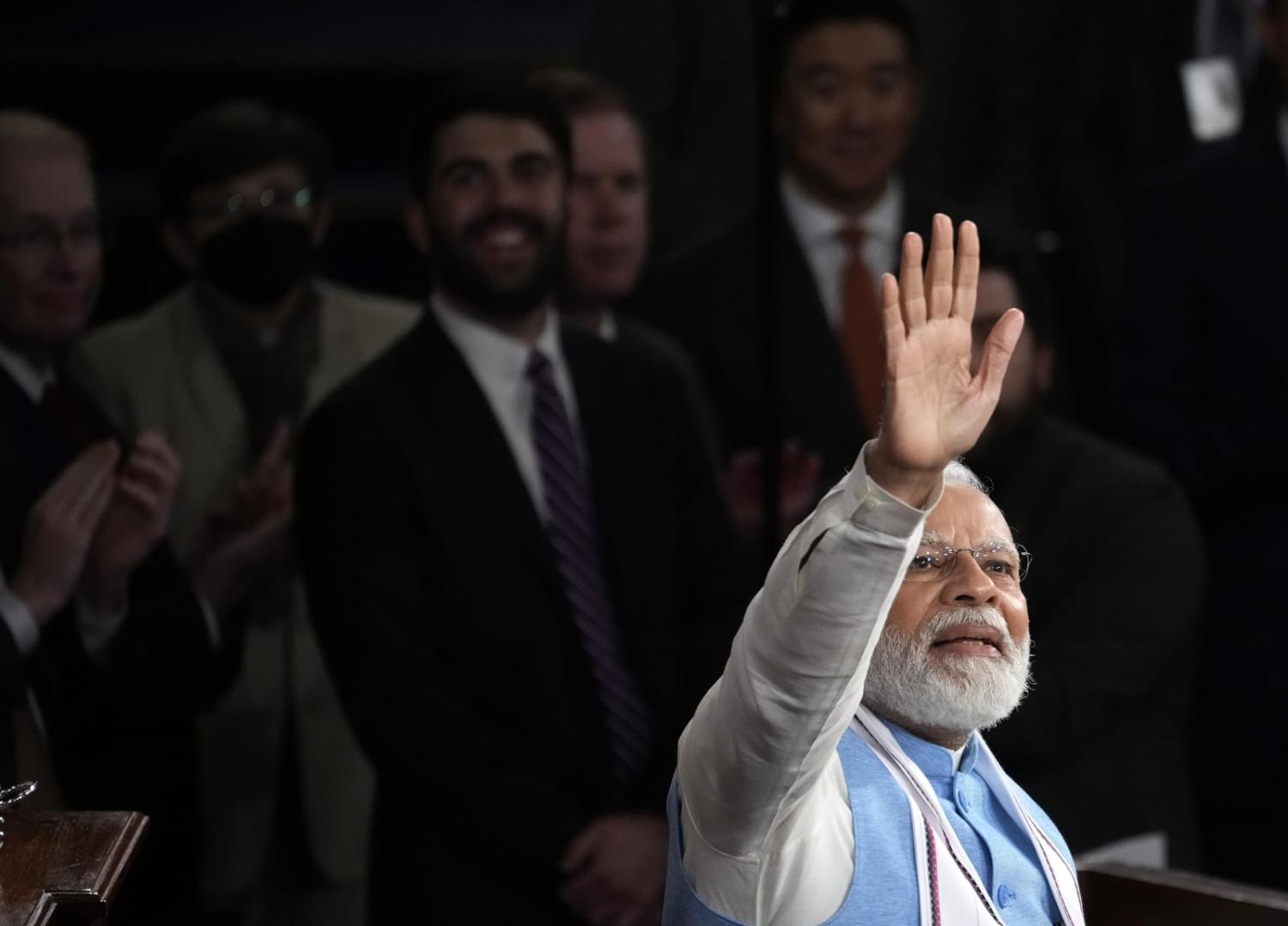Delhi needs to reach out to constituencies outside the policy circles in Washington.

India’s Prime Minister Narendra Modi has spoken publicly for the first time about allegations of an Indian official plotting to assassinate a Sikh separatist figure, an American-Canadian citizen, in New York. “If a citizen of ours has done anything good or bad, we are ready to look into it,” Modi said in an interview this week with Financial Times. The comments appeared to have encouraged Canada’s Prime Minister Justin Trudeau that India had undertaken a “tonal shift”, with the two countries having for months been at odds after Trudeau alleged agents of the Indian government had a role in the killing of another separatist in British Columbia in June.
But Modi was addressing the US case, which reports suggest that Washington privately raised the issue with Delhi in early August. The issue was kept under wraps given the sensitivity of the matter and India’s upcoming G20 presidency in September. Since a US indictment was unsealed in November, both sides have sagaciously made conciliatory remarks.
But what has also become evident during the current controversy is the depth of mutual misunderstanding. This is true particularly in the public domain, but also among analysts. Wild claims have proliferated – of CIA schemes or Indian malfeasance. One commentator summed up a feeling: “America and its Anglophone allies can kill anyone, anywhere, at will. India and others can’t.”
Some views appear trapped by old assumptions, ignoring the drivers that are bringing India and the United States into strategic alignment. At the turn of the century, even talk about India drawing closer to the United States would have be reflexively dismissed as idle parlour games in Delhi. At the same time, cooperation with Beijing was thought natural. Delhi’s bureaucratic inertia and ideological homilies cocooned the logic of geostrategy. India attempted to balance the distant power by courting the neighbour.
Thankfully, such zany affairs are behind us. Delhi awoke from its strategic stupor under successive leaders from Atal Bihari Vajpayee to Manmohan Singh. The current government’s US policy is largely a continuation of the bipartisan consensus in India, as former national security adviser Shivshankar Menon described in a recent Lowy Institute address. Washington and Delhi are prioritising a strategic alignment, via supply chain linkages, technological innovation and balancing China’s regional ambitions. The stakes are high.
During its tenure, the government in Delhi has assiduously engaged its US counterparts. It also has meaningfully connected with large sections of Washington’s think tank circles and the Indian diaspora in America. Nonetheless, there are many other constituencies in the United States to which India has not devoted adequate attention.
Apart from the policy wonks in Washington, India needs to reach out to constituencies outside the policy circles in Washington. Deeper people-to-people linkages with businesses, civil society groups, media organisations, chambers of commerce, and academia are crucial. These actors indirectly shape US foreign policy. More importantly, they influence public opinion on consequential matters.
Stronger connections will also foster understanding of each other’s perceptions and motivations. In this case, it will help in better appreciation of India’s concerns about separatists operating on American soil. It will also give a new perspective in Delhi’s diplomatic circles about the concerns of partners and friends, and moderate disagreements.
Expecting quick changes in how American civil society, media or business groups view Delhi is unwise. There is a longstanding perception in large sections of the American civil society and media about India’s “democratic backsliding”. It is another question how far these perceptions are grounded in reality. Regardless, building a deeper mutual understanding will demand consistent effort.
Some argue that China’s revanchism drives Delhi into Washington’s arms, and were Beijing to make nice with Delhi, India could again embrace “non-alignment”. For example, according to a recent New York Times column, “It’s not inconceivable for India to drift away from the West and strike a rapprochement with China if Modi feels ostracised, and Indians will endure the pain and go along if they believe that the United States is seeking to endanger their nation’s territorial integrity.”
But this is an oversimplification. The Indian economy has an arduous and long road ahead. The United States is one of its principal markets and sources of investment. Trade between the two partners crossed $191 billion in 2022. Moreover, given its technological deficiencies, India needs the United States for greater technological synergy and exchange. In other words, with or without Beijing, Delhi’s domestic transformation rests heavily on its bilateral relationship with Washington.
Building on the structural edifice of defence and tech cooperation, deeper business, civil society and media exchanges will provide a surer footing for India-US relations.
